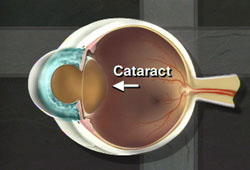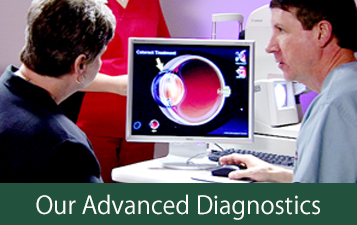Advancing The Art of Cataract Care
At Wallace Eye Associates, we’re ‘Advancing The Art of Cataract Care’ by giving our patients access to the latest breakthroughs in lens implant technology. Thanks to these and other recent advancements in lens implant technology and surgical techniques, cataract surgery has become one of the safest, most successful – and most common – surgical procedures performed today. Each year more than one million seniors have their vision restored through cataract removal and lens implantation.

The good news is that cataract surgery is one of the safest, most successful and commonly performed surgeries in the United States. As with any surgical procedure, there are inherent risks and complications that can occur. But 9 out of 10 people regain very good vision somewhere between 20/20 and 20/40 according to Prevent Blindness America (PBA). The even better news is that with FDA approved advanced lens technology patients have options that reduce or eliminate any need for glasses after cataract surgery.

What is a Cataract?
A cataract is the clouding of the eye’s naturally clear lens. In addition to the natural aging factor, there are other factors that can cause cataracts. These include exposure to ultraviolet light, trauma, diabetes and even lifestyle factors such as diet, alcohol consumption and smoking could lead to the development of a cataract.
Common Symptoms Of A Cataract:
As cataracts begin to develop, many things in life will begin to look less vivid. Colors will not be as bright. Objects become cloudy and blurry. Driving at night will be more and more difficult and you will be begin to have issues with glare.
Fortunately, modern-day cataract removal and lens implantation is one of the safest, most common – AND MOST SUCCESSFUL – surgical procedures performed today. In the past, cataract patients were forced to wear reading glasses and/or bifocals after their procedure. Today, our new lens implants are designed to reduce – and in some cases – eliminate your dependence on corrective eyewear after cataract surgery.
Astigmatism Management
Most patients having cataract surgery also have a certain level of astigmatism. Wallace Eye Associates is proud to now offer an array of Astigmatism Management procedures that can be performed at the same time as your procedure, including Toric Lens Implant and Limbal Relaxing Incisions. These lenses and surgical techniques are designed to reduce or eliminate the need for prescription glasses for distance vision activities like driving, playing golf, watching television or simply enjoying the outdoors.
Wallace Eye Associates can also provide you a broader range of vision through a surgical technique known as mono-vision or blended vision. This is similar to wearing one contact lens for distance and wearing another contact lens for intermediate and closer vision. This is not ideal for all patients and works best for those patients who have previously worn mono-vision contact lenses.
Treatment Options At Wallace Eye Associates
To compensate for the removal of the eye’s natural lens, a synthetic lens is implanted into the eye. These specially manufactured lenses are about the size of Lincoln’s head on a penny and weigh little more than a single kernel of corn. They are manufactured and polished to the precise curvature needed to properly focus light rays on the retina in the back of your eye. Exciting advances in technology and lens designs now give cataract surgeons and patients a number of lens and treatment options that can enhance the quality of vision after cataract surgery.


